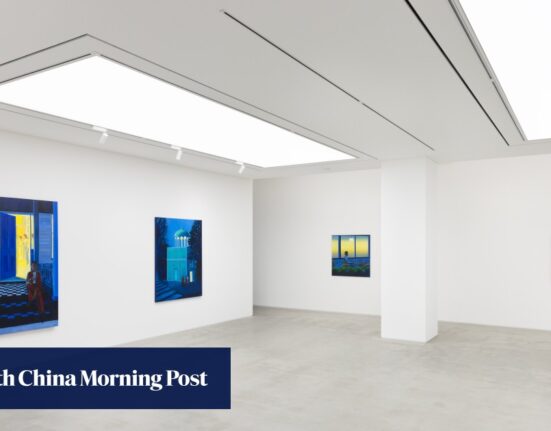
Blue paper has a niche but expansive part to play in art history. Originally made through a process of upcycling discarded blue rags (cenci neri or stracci tinti) into pulp, blue paper broke onto the art scene as a new material in northern Italy at the end of the 14th century. The forthcoming catalogue Drawing on Blue: European Drawings on Blue Paper, 1400s–1700s (Getty Publications, 2024) traces the introduction and adoption of blue paper as a drawing medium throughout Europe over the course of several centuries, presenting roughly 100 works united by its use.
Edited by Edina Adam and Michelle Sullivan — an assistant curator and associate conservator of drawings at the J. Paul Getty Museum, respectively — the book was created to accompany an exhibition opening at the institution later this month, which will explore the methodology of making blue paper, its dissemination throughout the art world during the Renaissance, and techniques developed by various artists to work with this new and exciting material. Previously employed in utilitarian capacities, such as to wrap parcels, the first use of blue paper for drawing in Europe is attributed to Bolognese painter Giovanni da Modena’s “Riding Procession with a Princess, Two Men, and Pages” (1410–50). Not only was the work unusual in its employment of blue paper, but women — in this case, an unspecified princess — were rarely featured as central subjects of courtly entourages such as this. Rendered in thin black linework and thick white shading, the party includes two pages, other servants, several horses, and a bearded squire leading the way.


Blue paper — shades of which vary across a spectrum of blue tints and sometimes appear as grays — was taken up not only by more artists across Europe but by other makers, as well. The stracci tinti method was innovated in the Dutch Republic between 1650 and 1750, making Dutch blue paper a coveted commodity for artists including Venetian pastelist Rosalba Carriera (1673/75–1757), who frequently committed works to blue paper, including three from her series of Muses (c. 1690–1757). While some artists limited the applied colors to black, white, and grey pencils to allow the blue to shine through as the main pigment, Carriera’s pastel treatment instead uses the blue paper as a simple wash of background color, almost imperceptible beneath the other colors drawn over it but evident in the verso view.

A middle section of the book focuses exclusively on Jean-Baptiste Oudry, who took up blue paper as something of an artistic signature as the medium flourished in 18th-century France. Oudry was a painter of historic scenes, including hunting and animal portraits, and some 70% of his extant drawing oeuvre is executed on colored paper. The chapter, written by art historian Camilla Pietrabissa, focuses specifically on a series of 276 drawings that Oudry made between 1729 and 1734 for an illustrated edition of French poet Jean de La Fontaine’s Fables (1668–94), all on blue paper.
Drawing on Blue is perhaps best intended for the purest kind of art historian — one who can deeply revel in the details of the conversation between artists, media, and advances that seem to be purely industrial or mechanical, but have unintended artistic applications. Even for the layperson, it is endearing to look into a past, however distant, and learn of artists doing what they always have done: finding something new, seizing upon it, and exploring its potential from every angle as a new vehicle for expression.


Drawing on Blue: European Drawings on Blue Paper, 1400s–1700s (2024), edited by Edina Adam and Michelle Sullivan, is published by Getty Publications and is available for pre-order online and from independent booksellers.






